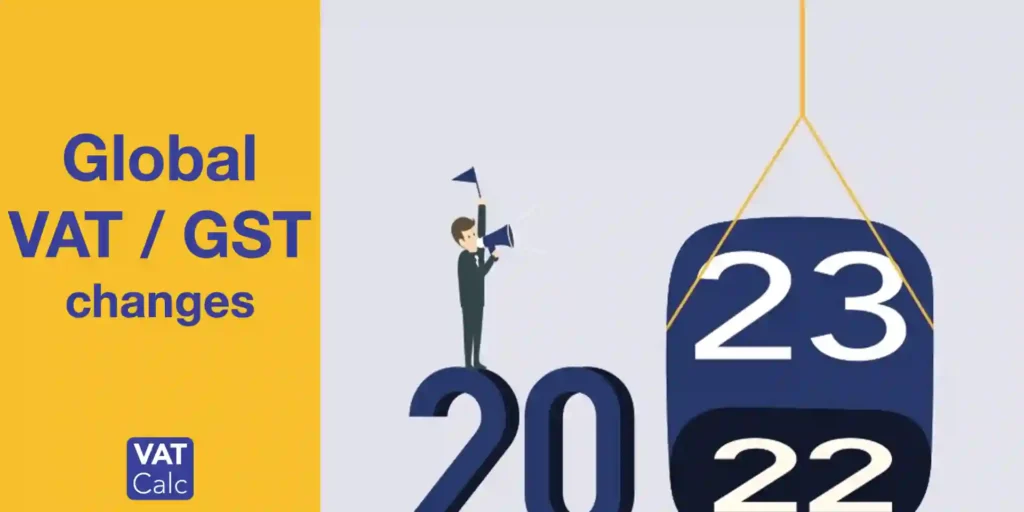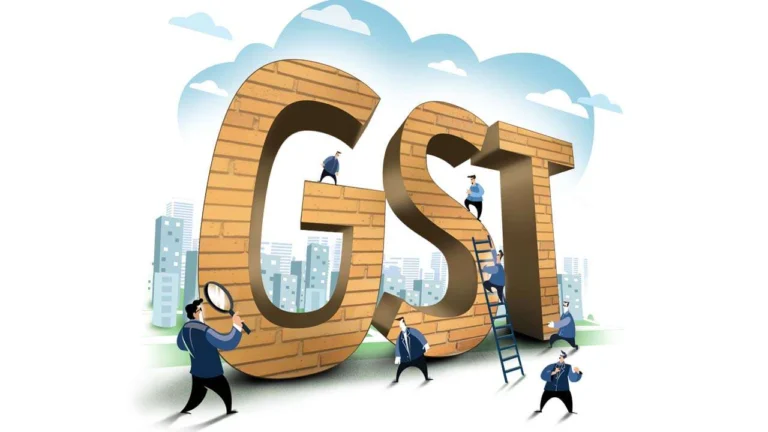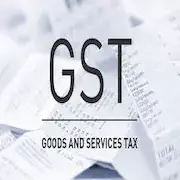Tax is a term that almost everybody can relate to!
When discussing the Top 5 Countries with Lowest GST Rates, it is basically a value-added tax (VAT) levied on most goods and services. Consumers at the end of value-point across the chain are bound to pay the goods and services tax, with few exemptions and reduced rates. The businesses in return are required to remit them to the state or government departments. The GST is also coined as an indirect tax and has taken over other indirect taxes, such as excise duty, services tax, etc.
The concept of goods and services tax was first put forth by France back in 1954. Since then many countries have followed in its footsteps and introduced GST after passing laws around it. Goods and services tax is levied in multiple stages across the supply chain. This tax is divided into a multi-stage collection process on the basis of value addition for the consumer. Unlike the sales tax rates, the GST rate is a special tax that is comparatively economical. In a majority of the countries, the tax revenue is remitted to the federal reserves under a unified legal condition.
However, some countries, such as Canada, have to charge either additional provincial state taxes (PST) along with GST or harmonized sales tax (HST), which is a combined rate of tax applied based on the locality.
The GST rate varies from country to country. You may find some countries charging an exuberant rate but there are other countries that charge a nominal tax on consumer goods. The list of countries following the GST system is long but we have narrowed it down to 5 countries that are charging the lowest tax rate.
The basic purpose of this tax is to reduce the burden on the consumer. This, thereby, leads to more affordability of essentials, especially for those belonging to lower classes. But before we discover the top 5 countries with the lowest GST rates in 2023, we need to discuss the basic difference between GST and sales tax.
Difference between GST/VAT and Sales Tax System
As evident from the terminologies, both of these tax rates are imposed on the sale of goods or services. The two things that differentiate the GST or VAT from the Sales Tax System are the number of times the tax is collected and the party who is responsible for the remittance. Just to clarify, both GST and VAT refer to the same taxation system. The word ' VAT' is more common in Europe and some other countries outside of European tax treaties, which is used to define their indirect tax similar to GST. In Japan, the same tax system is referred to as Japan Consumption Tax (JCT).

Before we talk about the top 5 countries with the lowest GST rates in 2023, we need to understand the underlying difference between these two types of taxes. To do so, we have divided these differences into five categories as follows:
1. Ground Work for Taxes
As discussed earlier, GST or VAT is a tax that is charged in multiple stages at each level of the supply chain. The tax is applied to each and every stage of production and distribution. This tax is applicable to both businesses and customers. On the other hand, sales tax is applied to the final price of the goods consumed or services rendered. Only the end consumer is responsible for paying the sales tax.
2. Administrative Legalities
In VAT or GST, the tax collected at each stage across the production and supply chain phases is remitted back to the government. In this system, each business party involved is responsible for the collection of data at each value point. And similarly, each one of them is bound to redirect the revenue collected through this tax back to the government. Unlike VAT, the sales tax is collected by the seller only, which is then remitted back to the state Department.
3. Invoicing of Taxes
For the GST/VAT taxes, the tax is often inclusive of the total price. However, in some cases, the service providers are required to separately state the tax. In some cases, you may find the GST/VAT registration number on the invoice. In the case of sales tax, the seller is solely responsible for mentioning the sales tax in the invoice separately.
4. Transaction Legalities
In the case of VAT/GST, the tax is applied to a wide range of transactions. This tax is applicable but not limited to intermediate plus capital goods, services, and even import & export. The taxation in the sales tax system is limited to goods and services at the retail level only.
5. Purchases Taxability for Businesses
For VAT/GST, the resellers pay the tax for the purchases to the vendor. Once done, they can reclaim the VAT or GST for the tax amount paid on the business purchases. However, for sales tax, the resellers can issue a tax exemption certificate to the vendors. In this way, they are not liable to pay taxes on the items that they purchase with the intent to resell afterward.
International GST Rates in 2023
Ever since the GST system was introduced in the mid-50s', more than 170 countries have adopted the system due to its comprehensive structure, flexible mechanism, transparency, efficiency, and burdenless tax system at the consumer end.
There is no denying when talking about the role of GST in transforming the economy and driving stability. This unified tax system has replaced multiple indirect taxes, making the system
more streamlined. With its reduced rate, this tax is quickly replacing the sales tax and thereby, contributing to a more stable economy. This has led to all of Europe adopting the VAT system to redefine their taxation system and improve their economic standing. Each country around the world has introduced different rates of tax on goods and services.
Among this list, the highest VAT rate is recorded at 27%, whereas the lowest tax is accounted for at 5%, which we have covered in the top 5 countries with the lowest GST rates in the 2023 section. These VAT rates take into account standard, intermediate as well as reduced tax rates.
5 Countries with Lowest GST Rates in 2023
Globally, the criteria for valued-added consumption tax varies for goods and services. Each country has implemented a VAT rate of its own. As mentioned earlier, this tax is applied to a broader range of items and not just the necessities.

For your convenience, among 170 global countries implementing the VAT/GAT, we have narrowed down the list to the top 5 countries with the lowest GST rates in 2023:
United Arab Emirates
When talking about the top 5 countries with the lowest GST rates in 2023, the United Arab Emirates has topped the list of countries. The United Arab Emirates implemented the VAT system in 2018, with a started GST rate of 5%. This tax is applicable to most goods and services, with a 0% tax rate on a few items, such as exports outside the GCC territories, crude/oil export, health, and education with few conditions.
There are other tax exemptions as well if the obligations are met. Transactions of certain goods that are happening between companies in UAE Designated Zones (DZs) may be exempted from VATs. However, the supply of these certain goods or services might be prone to GSTs.
For UAE residents, the minimum mandatory threshold is set at AED 375,000. However, if the businesses register for VAT on a volunteer basis, the threshold is reduced to AED 187,500. For input VAT, the excess can be reclaimed after meeting certain requirements. On the other hand, the same can be reclaimed in the output VAT for future transactions.
Amongst all the discussed top 5 countries with the lowest GST rates in 2023, the UAE has maintained a steady VAT rate of 5 percent, since its adoption of the system.
Singapore
If you talk about countries that started with the lowest tax rates in the world, Singapore would top that list. It started off with a rate of 3% back in 1994, which currently stands at 8%. This value-added tax is applicable to all the taxable items, with an exemption for some of the financial services.
The Singapore government has defined two types of thresholds for the GST in Singapore. In the first case, the threshold for VAT-registered businesses is kept at a minimum global revenue of SGD 1,000,000 per year. In the second scenario, a distance sales threshold of SGD 100,000 for certain goods and services that are sold to Singapore. For international businesses that are operating in Singapore and are producing taxable items, they must follow the GST obligations.
Bahrain
Since January 2022, the Kingdom of Bahrain passed a law to deploy a standard VAT rate of 10%. Since then the rate has been applicable to a majority of goods and services, with some exempted from VAT or subjected to 0% of the VAT. The VAT was first introduced in Bahrain back in 2019.
The National Bureau for Revenue (NBR) is charged with the responsibility of looking after the implementation and execution of the GST in Bahrain. The VAT rate is applicable after the minimum threshold of BHD 37,000 is achieved. After registering with NBR, a VAT registration certificate and VAT account number are issued for the collection of GST.
The end consumer is responsible for paying VAT on behalf of only those businesses that possess valid VAT registration.
Saudi Arabia
In 2018, the Kingdom of Saudi Arabia first imposed a GST rate of 5 percent on consumption goods and imports, which was later increased to 15% in 2020. The VAT rate was increased owing to post COVID-19 crisis. The tax is applicable on most goods and services with an exemption on supplies, e.g. credits, saving accounts, Islamic finance products, and life insurance, to name a few.
In the most recent 8th wave of the second phase of the VAT implementation, the Zakat, Tax, and the Customs Authority has set a threshold of 400 million Saudi Riyal for VAT-registered businesses.
A business that is procuring services from outside means is obligated to pay an input VAT of 15% on the price incurred. On the other hand, an output VAT rate of 15% is imposed on the cost incurred by consumers. After the completion of the VAT period, the businesses must calculate the differences between output VAT and input VAT. If the net tax outcome is positive, a portion of it is remitted back to the government, otherwise, the businesses can reclaim the same difference as a refund.
Luxembourg
Last among the list of top 5 countries with the lowest GST rates in 2023 is Luxembourg.
Luxembourg has introduced revised VAT rates owing to the increasing inflation in the country. In 1980, at the rate of 8%, Luxembourg introduced the value-added tax in its territory. The standard rate sore to 16% till the intermediate and a reduced rate of 13% and 7% was introduced.
To counter the soaring prices of goods as well as services, the government decided to reduce the tax burden to 3% only. This super reduction in GST has been in effect since January 2023 and will remain so until December 2023. The government further decided to ease the tax collected on petroleum products. This lowest VAT rate on the incurred price was approved till August 2022 but the government decided to extend the duration to December 2023.
The VAT is applicable on the acquisitions of goods or services with an amount exceeding the threshold of 10,000 Euros, excluding taxes.




